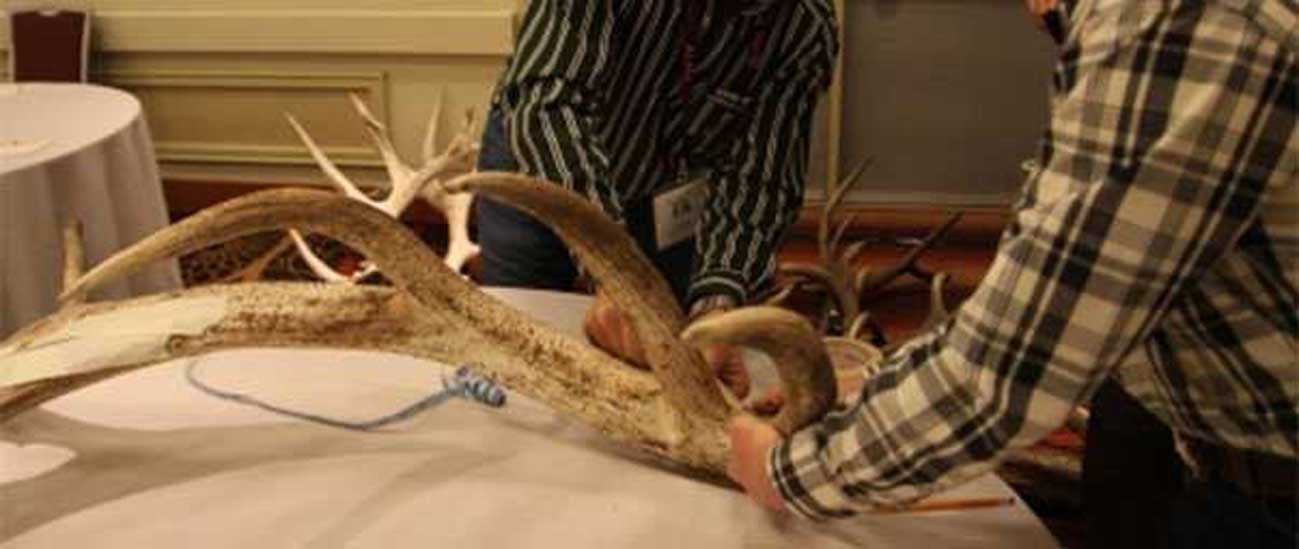The unofficial, quick and easy way to get a rough score on your elk.
Dying to know what the bull you killed this fall measures? Got a head on your wall that you always say “scores around 300,” but you don’t really know for sure? Well, we can help you come close to a score—unofficially of course. For an official score, you’ll need to have the rack measured by a certified Boone and Crockett (B&C) scorer. B&C’s website (boone-crockett.org) provides a printable score sheet, though it looks like a 1040 income tax form. Better yet, their website lets you type in the measurements as you go, then does the computations and spits out a score. I recommend that option, and this article will walk you through the steps to score a typical elk using that online calculator. After you’ve allowed the antlers to “dry” for 60 days, follow these steps.Once you’ve entered all the numbers, hit return and the program spits out your score on the next screen!1) Enter the number of points
Keep in mind the beam tip is counted as a point, but not measured as a point.2) Spread Measurements
Next come three spread measurements: tip-to-tip, greatest spread, and the inside spread of the main beams. These measurements can vary widely depending on where you put the tape. Rather than devote all our space here to these measurements, it’s best to defer to the B&C website for guidelines. The one that really counts is the inside spread, which is taken perpendicular to the axis of the skull, between the centers of the main beams at the widest point.3) Abnormal Points
Now, add up the lengths of abnormal points. Keep in mind there’s gross score and there’s net score. Gross is the typical frame, without deductions for lack of symmetry, plus the total of the lengths of all the abnormal points, plus the total inside spread. Even on nontypicals there are still symmetry deductions on the circumferences, beam length and tine length. B&C’s online scoring system will calculate this for you.4) Main Beam
To get the length of the main beam, it’s helpful to use a steel cable (like an old bike brake cable) in place of a tape measure. Using string is a bad idea as it can stretch. Start at the outside end of the burr and follow the outside curve of the beam. In general, the cable or tape should stay near the middle of the beam on the outer side, taking into account the curving or rotation of the antler as you measure out to the top.5) Measure The Points
Now it’s time to measure the points. It can be tricky to know where to begin to measure the antler point, but think of where the beam would be if there wasn’t a tine there; that’s the base of the point. Perhaps the biggest mistake in measuring an elk comes at the very beginning when measuring the brow tine, or G1, says Justin Spring, assistant director of big game records for the B&C Club. Most people will measure from the bottom next to the burr, but you should start in the center or midpoint of a line along the edge of the main beam. From this midpoint you follow the tine until the cable naturally transitions to the bottom edge of the point, then follow that curve up to the tip. The rest of the points should be relatively easy to measure as long as you find that baseline.5) Circumferences
Finally, the circumferences. You must use a flexible steel tape on these measurements, and you must measure at the narrowest location between the points. For this you will make four pairs of measurements: between first and second points, second and third, third and fourth, fourth and fifth. If your bull doesn’t have a fifth point, the fourth circumference is taken at the midpoint of the center of G4 to the beam tip.
Elk NetworkHow to Measure Your Elk
Hunting | July 17, 2018

Latest Content
Public Access Secured for Wyoming Hunters
Below is a news release from the Wyoming Game & Fish Department. The Rocky Mountain Elk Foundation offered funding support for the public access projects. [...]
Washington Approves New Rules to Limit Spread of CWD
Below is a news release from the Washington Department of Fish and Wildlife. Washington Department of Fish and Wildlife (WDFW) Director Kelly Susewind has made [...]
Washington Approves New 2025-2026 Hunting Rules
Below is a news release from the Washington Department of Fish and Wildlife. Washington Department of Fish and Wildlife (WDFW) Director Kelly Susewind made decisions [...]